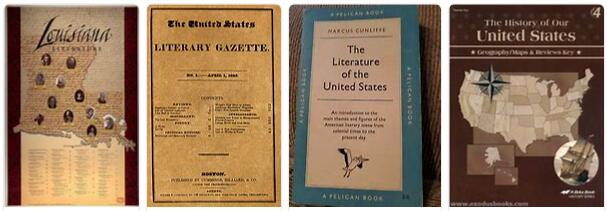
Periodization
It was in the group of northern states called New England (Maine, Massachusetts, Rhode Island and Connecticut) that the culture, first imported, then autonomous, it began to spread. The diffusion took place gradually, over a long period and along regional lines, which explains the importance, even literary, that for some time had the so-called frontier between the more advanced eastern regions and the western territories. Keeping in mind that dates and divisions are not to be understood rigidly, we can fix a first period that goes from 1620 to 1730, and is the colonial period; a second period that extends from 1730 to about 1820 and forms the epoch of reason; finally, the gradual transition to the romantic period, dominated by transcendentalist thought, of idealist origin, which occupies the years between 1820 and the civil war (1861-65). The fading of this thrust was countered by the emergence of a realist and naturalist component that marks the end of the century, extending its influences to the entire first half of the twentieth century, a period characterized by the emergence of a strong modernist experimentalism.. Alongside the disordered proliferation of forms substantially attributable to these models, in the second half of the twentieth century we witness the progressive overlapping of neo-avant-gardes linked to the different phases of the debate on postmodernism, as well as the definitive consecration of multiculturalism, marked by the emergence of linguistic models of ethnic origin and of social subjects hitherto considered minorities and subordinates.
Poetry and tradition
If the American Renaissance marks the moment in which American culture succeeds, especially through its writers, in completing that process of emancipation which on the political level had ended in the last part of the 18th century, it persists, especially in poetry, a tendency to move in the wake of the European tradition and the great models of English Romanticism. Thus the brilliant irregularity of Whitman’s verse is matched by the formal perfection of the poem by WC Bryant, whose ‘meditation on death’, the poem Thanatopsis (1817; 1821), is influenced by W. Wordsworth, as well as a classical training of a clearly traditional type. ● But it is above all in the Boston of the 1840s and 1850s, dominated by the personality of HW Longfellow, professor of French and Spanish at Harvard, translator of Dante and poet trained mainly on European models, that the American poetry of those years expresses, through the so-called school of the ‘Brahmins’, its most purely traditional vein. Author of very popular compositions (partly collected in Ballads and other poems, 1841), in the poem Evangeline (1847) and even more in The song of Hiawatha (1855), he manages to render native historical and folkloristic motifs through linguistic and formal models of classical inspiration, in an attempt to arrive at an epic synthesis which, however, will prove to be mostly predictable and conventional. R. Lowell, Longfellow’s successor at Harvard, as well as director of the Atlantic Monthly first and then of the North American Review, author of The Biglow papers (1848; 1862), an interesting experiment in the New England dialect, and of numerous volumes of verses, including the famous A fable for critics (1848), which contains a refined satire of the transcendentalists. The eclectic OW Holmes also belongs to the Boston group who, dividing his interests between medicine and literature, gains a leading role, especially as an essayist, thanks to the series of lively themed conversations: The autocrat at the breakfast table (1858), The professor at the breakfast table (1860) and The poet at the breakfast table (1860). ● Among the intellectuals, those close to the Boston group should also be remembered some historians with strong literary interests, such as WH Prescott, first biographer of the novelist CB Brown and author of a monumental History of the conquest of Mexico (1843); JL Motley, who wrote a novel, Merry-Mount: a romance of the Massachusetts colony (1849), as well as volumes of history including The rise of the Dutch Republic (1856); in the end, F. Parkman, author of the famous The Oregon trail (1849), fundamental document on the advance of the Frontier, in which he revisits his travel impressions with the air of a narrator. ● But the discourse on the centrality of Massachusetts in the development of nineteenth-century American culture cannot fail to conclude with the name of E. Dickinson, whose vast poetic production, published in its entirety only in 1955 under the title The poems of Emily Dickinson, has now firmly acquired the place of excellence that belongs to it. Far from the expansiveness of Whitman’s verse, Dickinson’s writing, much more intimate and delicate, is actually no less powerful, nor less innovative. And if in one the link with transcendentalism is transparent, in the other it must be grasped precisely in the inverse quality: in that apparent lack of self-confidence, in doubt and questioning, which nevertheless always prelude to the manifestation of the individual trait..